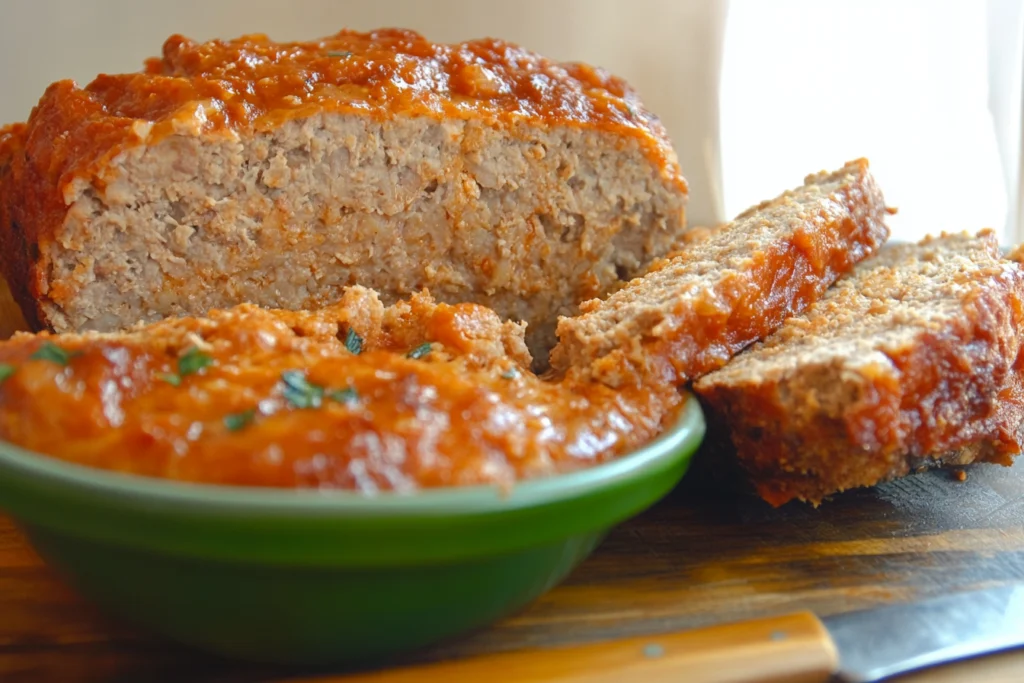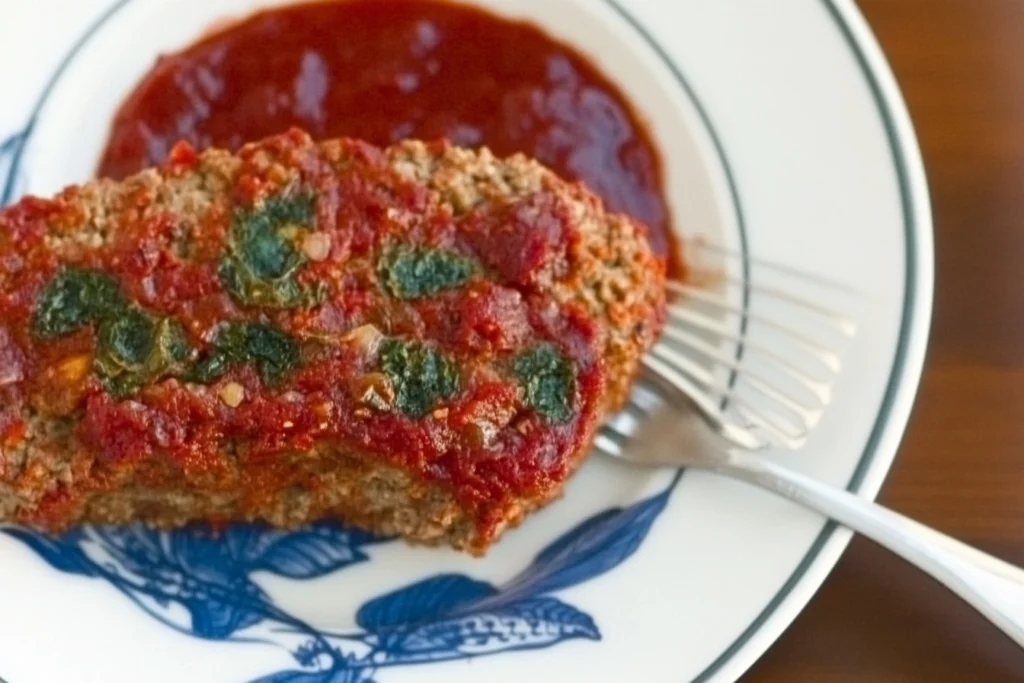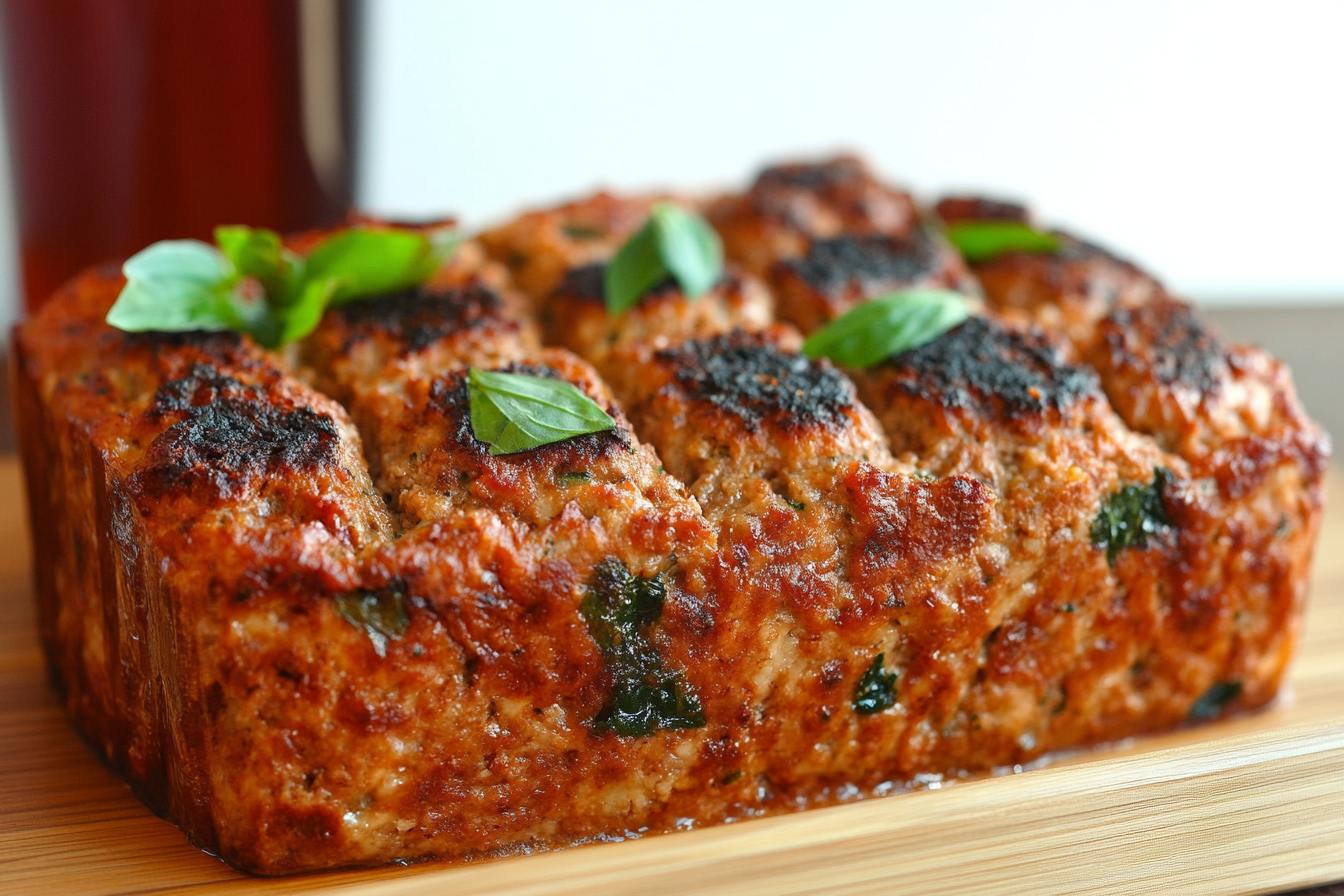When it comes to meatloaf, this comfort-food classic has graced dinner tables for generations. However, achieving a meatloaf that is moist, flavorful, and satisfying requires more than following a basic recipe. Often, one poor ingredient choice can ruin the dish entirely. Therefore, knowing what not to put in meatloaf is just as crucial as understanding what belongs in it. In this guide, we’ll explore the common mistakes, problematic ingredients, and myths that could derail your efforts to create the perfect meatloaf.
Part 1: Understanding the Basics of Meatloaf Ingredients
The Art of Making Perfect Meatloaf
Creating the perfect meatloaf is both a science and an art. While its simple ingredients—meat, binder, and seasoning—seem straightforward, one wrong move can turn your dish into a disaster. Whether you’re a seasoned cook or a beginner, it’s essential to understand how ingredient selection impacts the final outcome. With this knowledge, you’ll avoid the most common pitfalls and prepare a meatloaf that is consistently delicious.
Why Ingredient Selection Matters
When making meatloaf, not all ingredients are created equal. The choices you make affect three critical aspects:
- Texture: Too much moisture can make the loaf soggy, while too little results in dryness.
- Flavor balance: Strong or mismatched flavors can easily overpower the meat.
- Cooking time: Ingredients with varying moisture levels and densities cook unevenly.
By avoiding problematic ingredients, you can ensure a cohesive, well-cooked meatloaf every time. For example, skipping watery vegetables or overly sweet additions allows the natural flavors of the meat and seasoning to shine.
The Role of Balance in Flavor and Texture
The hallmark of a good meatloaf lies in balance. To achieve this, the interplay of four essential elements must be just right:
- Protein: The meat forms the foundation and dictates the texture.
- Binder: Breadcrumbs and eggs hold the mixture together.
- Moisture: Milk or broth prevents the loaf from becoming dry.
- Seasoning: Herbs and spices provide depth of flavor.
If even one element is off, the entire dish suffers. For instance, adding too much binder can make the meatloaf dense and unappetizing, while over-seasoning might mask the meat’s flavor. Thus, maintaining balance is crucial.
Meatloaf as a Versatile Dish: Customization vs. Common Pitfalls
One of the reasons meatloaf remains a household favorite is its versatility. It allows you to experiment with different ingredients, from types of meat to seasoning blends. However, as tempting as it may be to push creative boundaries, over-customization can lead to:
- Overpowering or clashing flavors.
- Structural failures, such as crumbling or collapsing during baking.
- Uneven cooking caused by inappropriate fillers or add-ins.
To avoid these pitfalls, try sticking to proven combinations that ensure a harmonious dish. While creativity is encouraged, it should not come at the expense of texture or flavor.

Core Ingredients You Should Always Include
While this article focuses on what not to put in meatloaf, let’s first establish the essentials that form a solid foundation:
- Ground Meat: Whether beef, pork, turkey, or a combination, it provides the base.
- Binder: Breadcrumbs, crushed crackers, or even panko, paired with eggs, keep the mixture cohesive.
- Seasoning: Salt, pepper, garlic powder, and dried herbs are classic choices.
- Moisture: A splash of milk, cream, or broth ensures tenderness and prevents dryness.
These staples are time-tested and should remain at the heart of any meatloaf recipe.
The Science Behind Binding Agents
Binding agents play a crucial role in the structure of meatloaf. Without them, your loaf would fall apart. However, not all binders work equally well. Eggs and breadcrumbs are considered the gold standard for a reason—they provide the right consistency without overwhelming the meat. To get it right:
- Use 1 egg per pound of meat.
- Add ½ cup of breadcrumbs per pound of meat.
Substituting with unconventional binders like oats or cornmeal may result in unexpected textures, making the meatloaf heavy or dense. Therefore, sticking to tried-and-true ingredients is the safest bet.
Identifying Ingredients That Can Ruin Meatloaf
Certain ingredients disrupt the balance of texture, flavor, and cooking time. Common offenders include:
- Excess liquids, such as milk alternatives or watery vegetables.
- Overpowering spices, like an abundance of garlic or chili powder.
- Filler substitutes that fail to bind effectively, such as oatmeal.
Avoiding these ingredients will help maintain the integrity of your dish and produce consistently better results.
How the Wrong Ingredients Affect Flavor, Texture, and Cooking Time
The wrong ingredients can wreak havoc on your meatloaf in three main ways:
- Flavor Issues:
- Overpowering spices can mask the meat’s natural taste.
- Sweet add-ins like raisins or pineapple clash with traditional seasonings.
- Texture Problems:
- Excess moisture creates a mushy consistency.
- Raw vegetables, like large chunks of carrots or potatoes, leave undesirable crunch.
- Cooking Challenges:
- Unbalanced mixtures cook unevenly, leaving parts of the loaf overcooked or underdone.
By understanding these risks, you’ll know how to steer clear of potential disasters.
Common Myths About “Creative” Meatloaf Add-Ins
In recent years, adventurous cooks have suggested “creative” additions to meatloaf, such as fruits, exotic grains, and sweet sauces. While these ideas sound interesting, they often fail in practice. For example:
- Myth: Adding pineapple enhances the dish with tangy sweetness.
- Reality: The high sugar content burns during baking and overpowers savory flavors.
- Myth: Oatmeal is a great binder substitute.
- Reality: Oatmeal creates a dense, chewy texture rather than the desired lightness.
Instead of chasing trends, stick with classic recipes for reliable results.

Mistakes Beginners Often Make in Choosing Ingredients
For those new to making meatloaf, some common mistakes include:
- Using poor-quality meat: Low-fat ground beef may result in a dry loaf, while overly fatty cuts can be greasy.
- Skipping the binder: Without eggs or breadcrumbs, the loaf won’t hold its shape.
- Overloading with vegetables: Too many vegetables introduce excess moisture, leading to a mushy texture.
- Experimenting too much: Introducing untested ingredients can create imbalances in flavor and consistency.
By avoiding these mistakes, you’ll set yourself up for success.
Part 2: Ingredients to Avoid in Meatloaf
When making a classic dish like meatloaf, the choice of ingredients can make or break your recipe. While creativity is encouraged, there are some ingredients that simply don’t belong in this comfort food favorite. In this section, we’ll dive into the specifics of what not to include in your meatloaf and why these choices can negatively impact flavor, texture, and overall success.
Introduction to the Worst Offenders
There are certain ingredients that seem harmless—or even innovative—but can ruin your meatloaf if not used correctly. From overly watery vegetables to overpowering spices, these components may compromise the structural integrity, cooking time, or taste. Avoiding these “offending ingredients” is critical to achieving a dish that’s moist, flavorful, and perfectly balanced.
Too Much Liquid: Why You Should Skip Soupy Ingredients
Adding moisture is important, but too much liquid can lead to soggy meatloaf that falls apart. Common culprits include:
- Excess milk: While a splash of milk keeps meatloaf tender, overdoing it results in a wet texture.
- Broth or stock: Using too much broth for added flavor overwhelms the mixture and impacts binding.
- Soupy sauces: Tomato sauce or BBQ sauce adds moisture, but excess amounts create imbalance.
Solution: Always measure your liquids carefully. Aim for no more than ½ cup of total liquid per pound of meat.
Milk Alternatives That Lead to Watery or Dense Meatloaf
Many recipes call for milk, but substituting with alternatives like almond milk or coconut milk can cause problems:
- Almond milk: Its thinner consistency may make the loaf soggy.
- Coconut milk: The strong flavor competes with the savory meatloaf profile.
Pro Tip: If you’re avoiding dairy, try unsweetened oat milk or a mix of broth and non-dairy cream for similar richness without the risks.
Overpowering Flavors: Avoiding Strong Spices and Seasonings
Over-seasoning is one of the quickest ways to ruin a meatloaf. While bold flavors can elevate the dish, excessive use of certain ingredients can overpower the meat.
Examples of Overpowering Ingredients:
- Too much garlic or onion powder: A little goes a long way. Overloading creates a pungent flavor that dominates the dish.
- Spicy chilies or hot sauces: These can overshadow the subtler notes of traditional seasonings.
- Exotic spices: Cumin, turmeric, or cinnamon may be tempting, but they don’t align with the classic meatloaf profile.
Tip: Stick to a balanced blend of salt, pepper, garlic powder, and herbs like parsley or thyme for a traditional flavor.
Problematic Fillers and Binders
While fillers and binders are essential, not all options are suitable for meatloaf. Some substitutions can lead to undesirable textures or fail to bind the loaf effectively.
Fillers to Avoid:
- Oats: While oats work for some recipes, they can make meatloaf dense and chewy when overused.
- Cornmeal: This grain doesn’t absorb moisture like breadcrumbs, leading to a crumbly texture.
- Rice or quinoa: These grains don’t bind well and can make the loaf fall apart.
Tip: Use breadcrumbs, crushed crackers, or panko for the best texture and binding.
Vegetables That Add Too Much Moisture
Vegetables add flavor and nutrition, but certain types can release excess water during cooking, making the loaf soggy or uneven.
Watery Vegetables to Avoid:
- Zucchini: This vegetable has a high water content and can ruin the loaf’s structure.
- Cucumber: Adds too much liquid and an odd texture.
- Watery greens: Spinach or kale, if not properly cooked and drained, can overwhelm the mixture.
Alternative: Use finely chopped or sautéed carrots, celery, or bell peppers for flavor without excess moisture.
Uncooked or Overly Large Add-Ins
Raw, crunchy vegetables may seem like a great idea, but they often don’t cook evenly within the loaf. This leaves you with hard, undercooked bits that ruin the dish’s texture.
Examples:
- Raw potatoes: These take too long to cook and remain crunchy.
- Large carrot chunks: Without pre-cooking, they don’t soften properly.
- Whole mushrooms: Their size and moisture content make them unsuitable as raw add-ins.
Solution: Always pre-cook dense vegetables or chop them finely to ensure even cooking.
Sweet Ingredients That Don’t Belong in Traditional Meatloaf
While sweet and savory combinations work in some dishes, meatloaf isn’t one of them. Adding fruits or overly sweet components can create an unbalanced flavor profile.
Examples of Sweet Ingredients to Avoid:
- Raisins or dried fruits: These clash with the savory nature of meatloaf.
- Fresh fruits like apples or pineapple: The sweetness overpowers the dish.
- Sugary glazes: While a touch of sweetness in the glaze works, avoid overly sugary toppings like honey-based mixtures.
Pro Tip: Stick to classic glazes made with ketchup, brown sugar, and mustard for a balanced sweet-savory finish.
When Garlic, Onions, or Spicy Chilies Overwhelm the Dish
Garlic and onions are staple flavors in many recipes, but too much of a good thing can be detrimental. Likewise, adding fiery chilies can throw off the balance entirely.
- Excess garlic or onion: Creates an overpowering, one-dimensional flavor.
- Chilies: Their heat can overwhelm traditional seasoning blends.
Solution: Use minced garlic or onion sparingly—just enough to enhance the meat’s flavor without dominating it.
The Risks of Adding Fruits Like Raisins, Apples, or Pineapple
Fruits may seem like a creative way to enhance flavor, but they rarely work in traditional meatloaf. Here’s why:
- Raisins or apples add sweetness that competes with savory flavors.
- Pineapple releases juices that disrupt the texture and cooking process.
- Cranberries may sound appealing, but they often overpower the dish.
Tip: Save the fruits for desserts and stick to savory ingredients in meatloaf.
Conclusion of Ingredients to Avoid
By avoiding these problematic ingredients, you’ll ensure that your meatloaf remains flavorful, balanced, and structurally sound. From excess liquids to overpowering flavors, every ingredient you choose matters.

